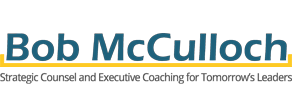In this section I put forward some of the concepts and principles that underlie my client work. These are downloadable PDFs that you are welcome to use in any way you see useful.
The phrase “knowledge anchors” was coined by consultant Peter came in the 1980s. Knowledge anchors are fundamental beliefs about our business and about what it takes to succeed, as well as fail. This two-pager explains the concept and provide some examples of knowledge anchors to help you inspect your own anchors, and determine whether they’re holding you secure in the storm, …or holding you back.
This one-pager outlines a simple and straightforward four-step approach to gaining broad support – “enrollment” – for a significant change initiative in the organization. In cross-functional groups of no more than 20 people, participants step through the program to produce action plans to implement the change. The entire exercise can normally be completed in a half day.
Questions to start the strategic thinking process
These are the basic questions the leadership of every organization – whether private sector business, public sector entity, or not-for-profit – needs to answer to set the foundation for their operation.
There are seven elements that need to be articulated to set the stage for change. It is totally scalable, in that it applies to corporations, institutions, countries, and individuals alike.
Components of Business Unit Strategy
This is a checklist of the items the leader of a business unit needs to address in laying out the strategy for the organization.
Fostering Creativity in Leader Teams
Some thoughts on how to encourage creative thought and action after the leadership team has established the strategy.
Eight Rules to Great Brainstorming (BusinessWeek article)
These ideas present some great background on how to making brainstorming work well.
This one-pager breaks out the elements of Howard Fromkin’s castoff statement:“Leadership is creating an environment in which individuals are ready, willing, and able to take initiative, be creative, and get results.”
I wrote this article for DMR Group back in 1989 – it was never published, …until now. I find it curious that even though technology has evolved dramatically over the past 20 years, the strategic issues around IT have persisted.
Dick Johnston and I put this paper together shortly after we started Johnston Smith Fromkin McCulloch in the early 1990s. There are two concepts Dick introduced me to that I find very powerful. The first is the notion of “the test” for the organization’s vision – it gets the leaders thinking about what “success” really means when we see it. The second is the notion of boundaries or constraints, through which we relegate certain elements to become “givens” rather than “targets,” and nowhere is this more important than with the measure of financial return – when managers start thinking of profit or profitability as a given, their mindset shifts to focus on things that are more important to the organization’s long-term vitality.




